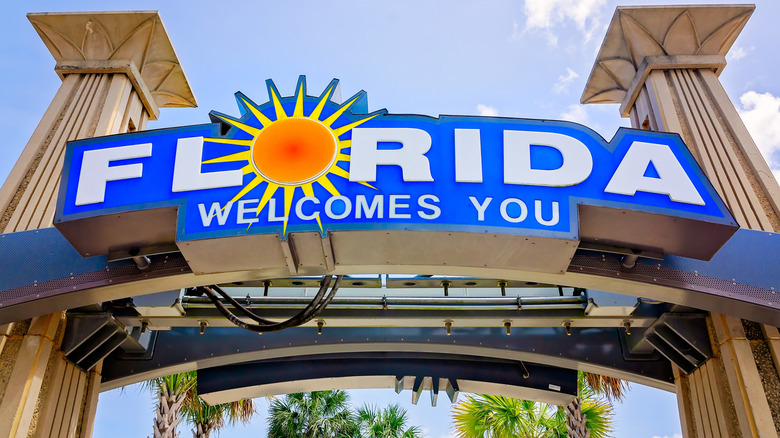What Tourists Should Know About Florida's Blue Traffic Lights Before Visiting
If you're a tourist who's planning to drive on your trip, you need to know the traffic laws of the place you're visiting. Different locations might even have traffic lights you're not familiar with. For example, in South Korea, there are LED lights installed on crosswalks. Closer to home, many cities in Florida now have a blue light above the traffic signal, and not everybody knows what it's there for. It's not just decoration. The blue light (also known as blue beacon, confirmation light, or reverse-side red indicator) is there to assist with traffic law enforcement.
Once the traffic light turns red, the blue LEDs come on, and they're visible from nearly all angles, so that officers can easily spot red-light runners. Police officers can't always see a red light, especially at intersections, so the blue confirmation light helps to avoid relying on tricky angles or guesswork. If the light is indeed red when a car blows through, then an officer has legal grounds to issue a citation. Fines can be around a minimum of $158; failing to pay for up to 60 days could increase the fine to $262 and add three points or more to your vehicle record.
Staying aware of the blue traffic lights in Florida
If you're not familiar with Florida's roads, you might assume that the blue lights are surveillance cameras or part of some new tracking system. However, the reality is that they don't record or transmit data. They're simply for red light confirmation. According to the Florida Department of Highway Safety and Motor Vehicles (FLHSMV), over 800 fatalities and more than 94,000 injuries related to crashes at intersections are recorded yearly.
According to a 2014 study conducted by the Minnesota Department of Transportation, there was a 33% drop in crashes related to red-light running after the installation of blue confirmation lights. The Federal Highway Administration — which calls the blue beacons "red light indicator lights (RLILs)" — confirmed in a 2017 study that these lights truly offer a significant reduction in crashes, proving how helpful they are for all road users.
The best and safest thing you can do when approaching Florida's blue-light intersections is to treat them the same as any other intersection. Drive calmly and patiently, and obey the red lights. When you see a yellow light, resist the urge to push through, since the blue beacon is designed to light up immediately the signal goes red. The blue beacon isn't some sort of "traffic trap", though. It's an additional safety tool for you and other road users. Whether you're looking to visit an underrated Florida vacation spot or going to some of the state's highly-rated botanical gardens, staying lawful is non-negotiable.

